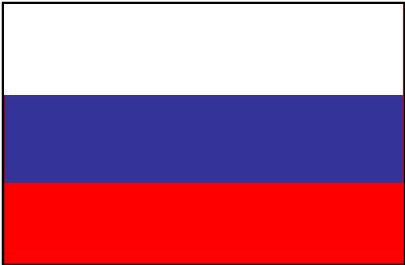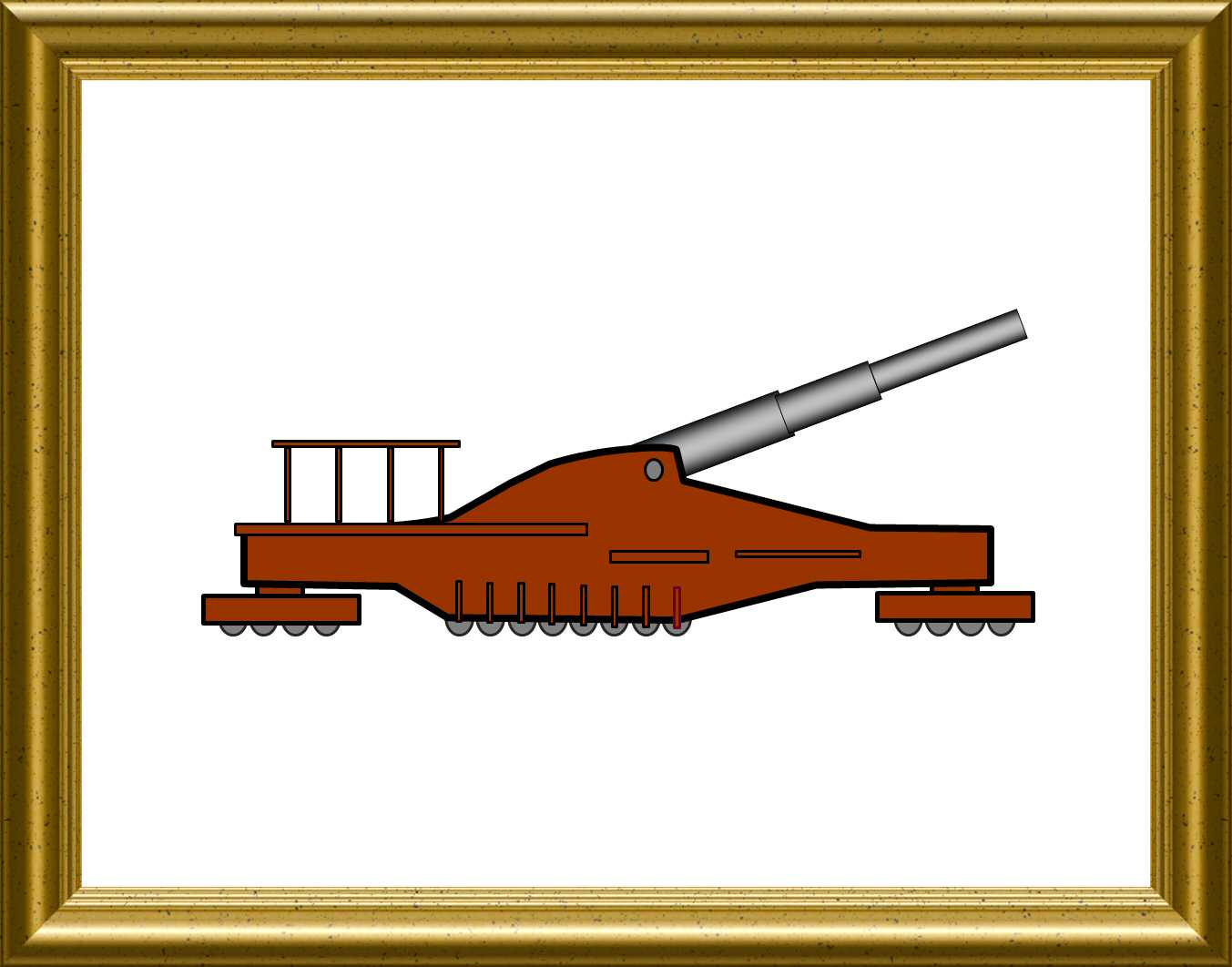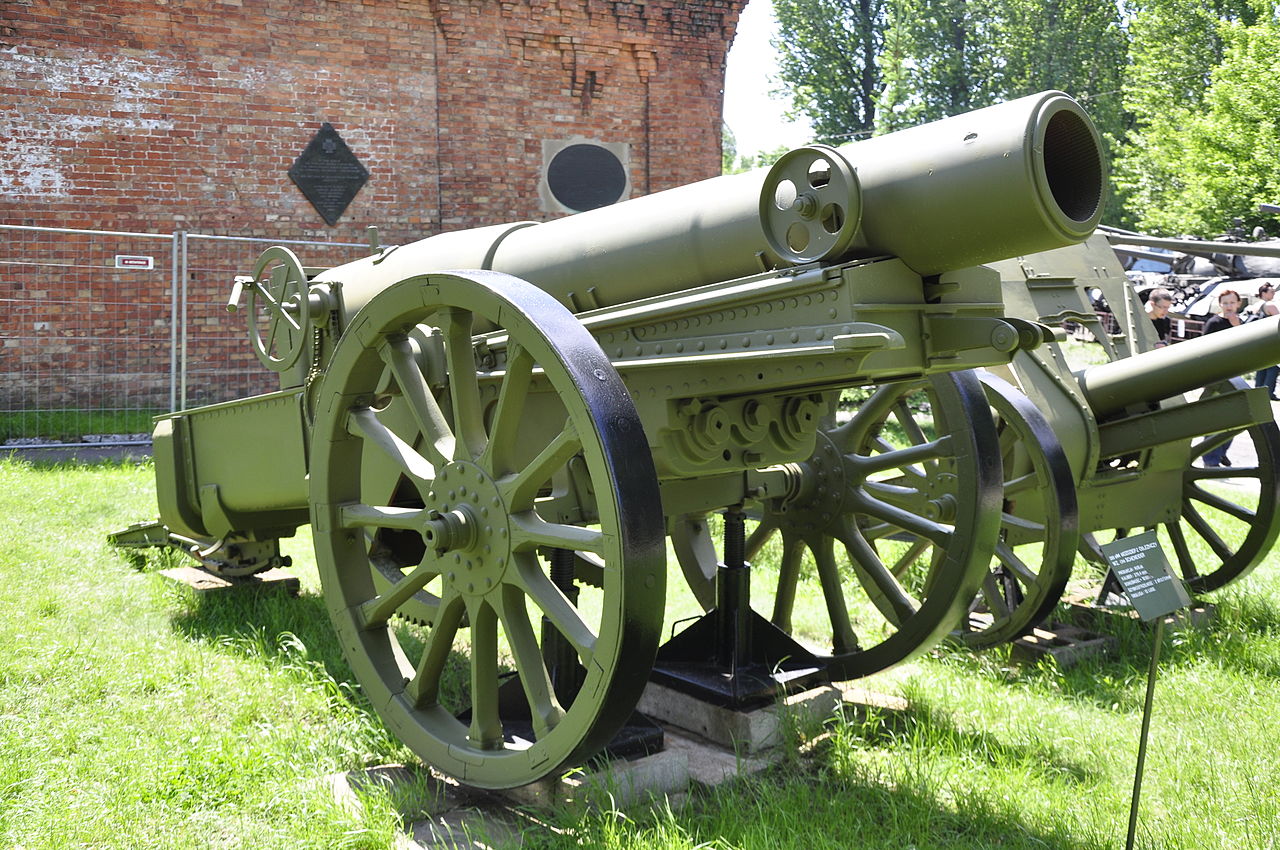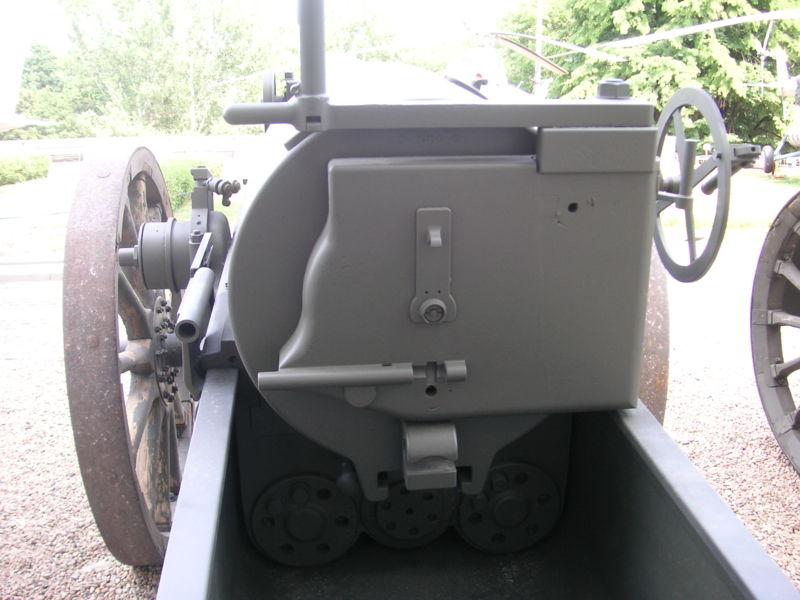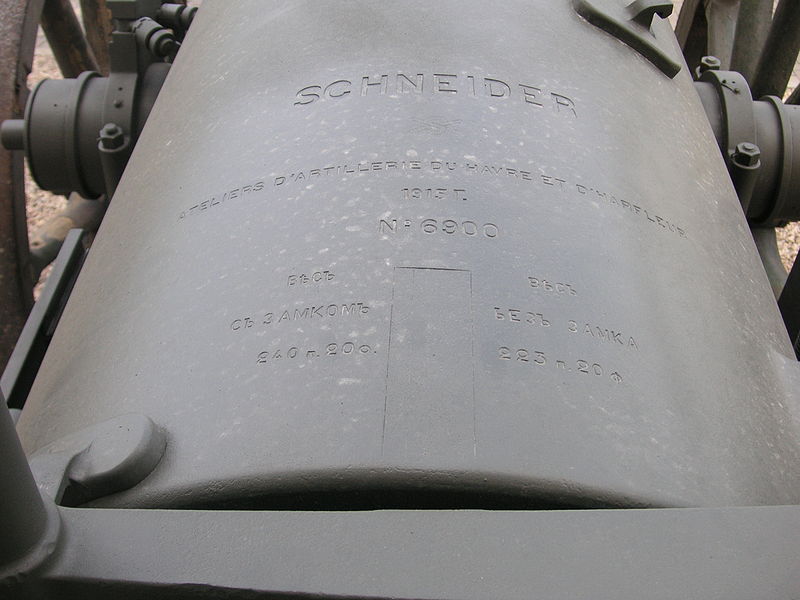|
Historic context :
The collaboration of the French Schneider Works with the Russian company Putilov, growing continuously from the beginning of the XXth century, had given to this talented company a privileged and lucrative access to this huge empire needs in artillery. It was therefore quite naturally that the Russian headquarters turned to it in 1909 when they were looking for a modern 11 inches howitzer, this calibre having been very successfully used with a Krupp design by the Japanese against Port Arthur fortifications during the Russo-Japanese war in 1904.
The challenge was accepted by Schneider who presented in the 1912 trials conducted on a Dniepr island (where fortifications had been built just for this occasion) a 'Mortier de 11 pouces (279.4 mm) TR' ('TR' = Tir Rapide' - quick firing). These tests, also known as 'Otchakoff Experiments' and followed by numerous foreign nations, were an important step for the siege artillery and the fortress techniques of the beginning of the century, since they demonstrated both the vulnerability of the non reinforced concrete classical fortifications against these calibers, but also the inefficiency of this heavy mortar for the destruction of reinforced concrete modern fortifications.
Nevertheless Russia ordered 16 such mortars to Schneider who meanwhile had presented the weapon to France in a metric 280 mm calibre during tests in 1913. Facing the unavoidable coming conflict, France ordered 18 such mortars in November 1913. But at the start of the war only the guns designed to Russia were in a production stage. The two nations agreed to share the materials and this is how 8 mortars of 279.4 mm were delivered to the French army from February 1916 under the erroneous name 'Mortier de 280 mm TR Mle 1914 Schneider' whilst 8 similar other guns were delivered to Russia. This non metric calibre was kept for the following orders from both countries.
The tube of the 280 mm mortar was equipped with a typical Schneider breech with front panel, and was placed on a large cradle also typical of this company fabrications. The cradle was linked to the barrel by the recoil recuperation system composed with two hydraulic brakes placed at both sides of a central recuperator. The cradle was mounted on the carriage by two suspended trunions, and the carriage placed on a heavy platform by the intermediate of an anterior pivot. The platform had the place for a central pit needed to allow the barrel recoil when firing at high elevation angles, a loading wagon for the heavy 200 kg shells (the loading operation needed the barrel to come back to a 10 degrees elevation angle), and a chinning bar for the manoeuvre of the ammunitions that had to be brought on a narrow gauge 60 cm railway section.
The use of the 280mm Schneider mortars in Verdun against the Douaumont fortress only confirmed the inefficiency of the heavy artillery against reinforced concrete modern forts, as it had already been known since the Otchakoff experiments of 1912. Despite this, a lack of mobility (16 tons in position, transport in 4 separate loads) and the difficult setup in firing position (16 hours on an avergae quality site), this impressive, modern, powerful and precise weapon, with a satisfactory range longer than 10 km, was one of the aces of the French army in the positions war.
165 such mortars had been delivered to France in Novembre 1918 (and 26 to Russia). An automotive version ('Mortier de 280 TR sur affût à Chenilles Saint-Chamond') was being built in a quantity of 25 pieces when the armistice came to stop the war. They were only delivered from summer 1919. They were developped on the same basis as the famous 'Canon automoteur de 194 GPF sur affut chenille St Chamond'
In 1940, the French army still aligned 109 mortars of 280 mm Schneider on platform, and 26 automotive ones. 75 of these weapons were captured by the Wehrmacht and used on the East front under the name '28 cm Mrs 601 (f)', facing the 26 similar guns still existing in the Soviet army in June 1941.
|
Technical data :
- Complete description : 11 inches siege mortar M 1912 Schneider
- Design year : 1914
- Calibre : 279.40 mm (11 inches)
- Weight in firing position : 16220 kg
- Weight for transportation : 24820 kg (carriage wagon 5710 kg, craddle wagon 6180 kg, platform wagon 6780 kg, barrel wagon 6150 kg
- Tube length in calibres : 12.00 (total length) - 9.46 calibres rifled part only
- Grooves : 88 constant angle 8 degrees 55 minutes to the right
- Projectile weight : 205 / 203 / 275 kg
- Initial speed : 178 to 418 m/s depending on the propulsive charge
- Fire rate : 4 rounds / 5 minutes
- Range : 10950 m
- Elevation range : +10 to +60 degrees
- Direction range : 44 degrees 60 minutes total range
|
